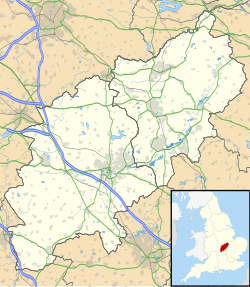Walton (Grounds) | |
|---|---|
Lost Settlement | |
Walton within Northamptonshire | |
| Coordinates: 52°00′23″N1°15′49″W / 52.00639°N 1.26361°W | |
| Country | England |
| State | Northamptonshire |
| Region | East Midlands |
| District | West Northamptonshire |
| Municipality | King's Sutton |
| Map Ref: HOSM36735 | |
Walton (Grounds) is located within the parish of King's Sutton in the English county of Northamptonshire. [1]
Walton, also historically referred to as Waleton, was a settlement recorded in Domesday Book in the hundred of (King's) Sutton. In 1086, it had a recorded population of 10 households.
Today, there are 4 houses and 2 farms in the area. [2]
